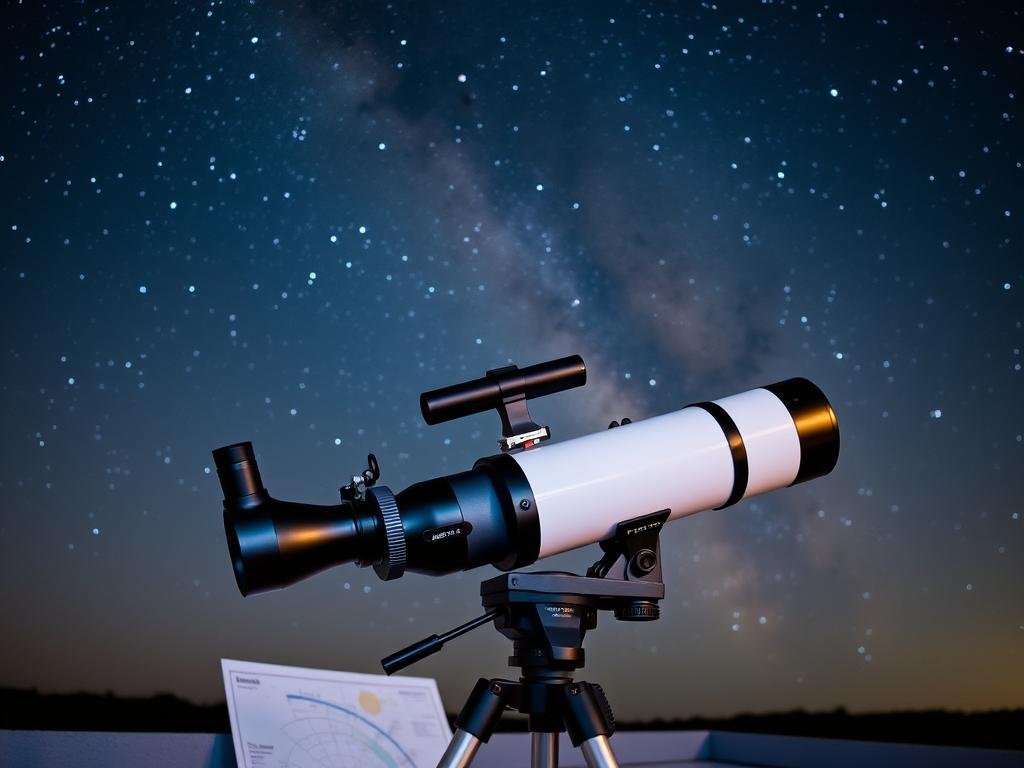There’s something profoundly humbling about standing beneath a truly dark sky filled with thousands of twinkling stars. Unfortunately, for most Americans living in urban areas, light pollution has robbed us of this natural wonder. More than two-thirds of U.S. residents can no longer see the Milky Way from their homes. But there’s good news – America is home to some of the world’s most spectacular dark sky locations where you can reconnect with the cosmos in all its glory.
In this comprehensive guide, we’ll explore the best stargazing USA destinations, from internationally recognized Dark Sky Parks to remote wilderness areas where the stars shine with remarkable clarity. Whether you’re a seasoned astronomer or simply curious about the night sky, these locations offer unforgettable celestial experiences that will leave you in awe of our universe.
Interactive Map of Top Stargazing Locations in the USA
Use this interactive map to discover America’s premier stargazing destinations. Each marker represents a location with exceptional dark skies and unique viewing opportunities. Click on a marker to learn more about each destination’s features, best viewing seasons, and accessibility information.
Essential Stargazing Gear for Your Night Sky Adventure
Before we explore specific locations, let’s cover the essential equipment that will enhance your stargazing experience. The right gear can make the difference between a mediocre outing and an unforgettable night under the stars.
Stargazing Equipment Essentials
Having the right tools will dramatically improve your ability to observe celestial objects and stay comfortable during long nights outdoors.
Beginner Telescopes
A good entry-level telescope opens up a new dimension of stargazing, allowing you to observe planets, star clusters, and distant galaxies in detail. Look for models with at least 70mm aperture and stable mounts.
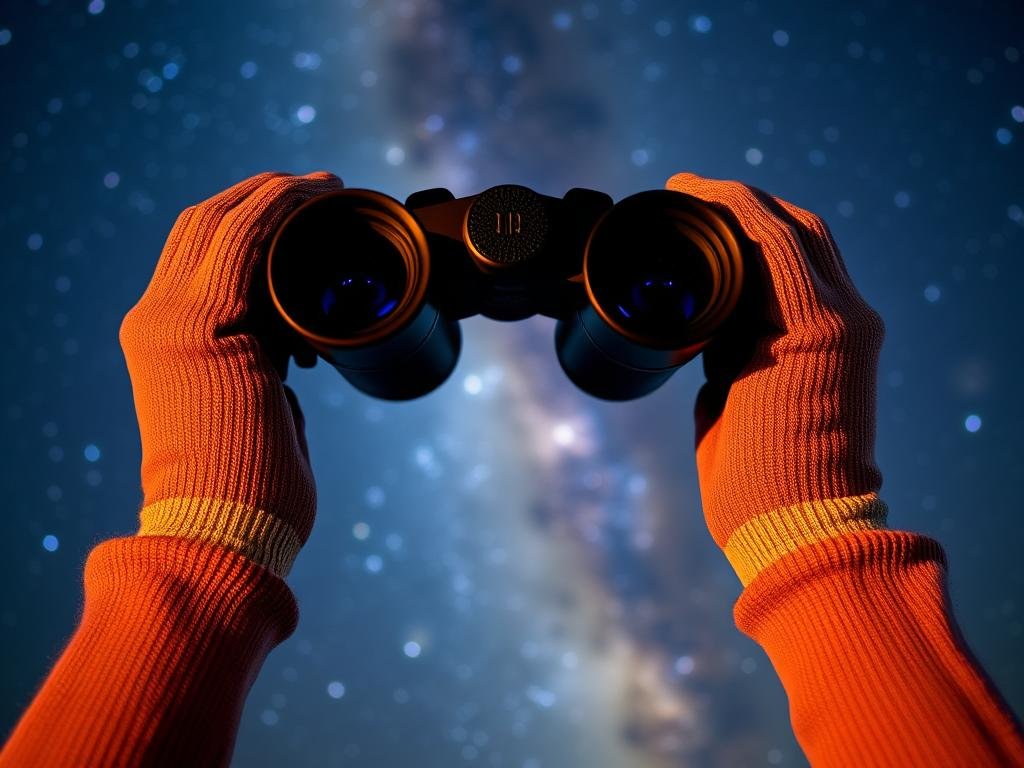
Astronomy Binoculars
More portable than telescopes, astronomy binoculars provide wide-field views perfect for observing star clusters, the Milky Way, and larger celestial objects. They’re also easier to use for beginners.
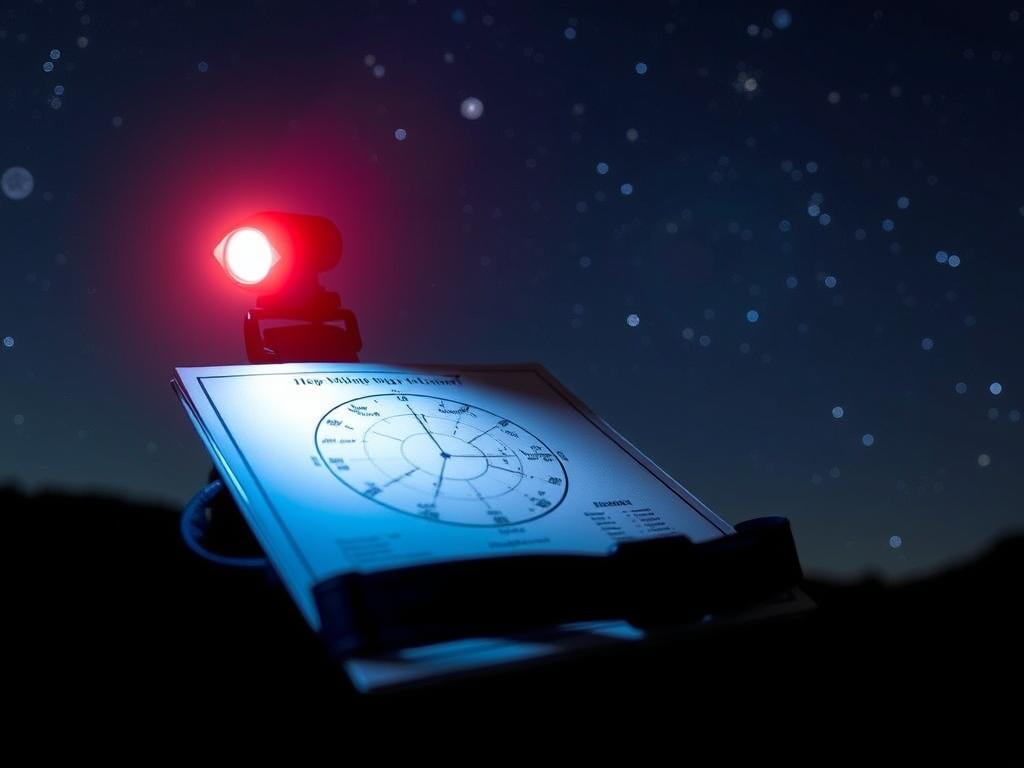
Red Light Headlamps
Red light preserves your night vision while allowing you to navigate and read star charts. A good headlamp with red light mode is essential for serious stargazing at any dark sky location.
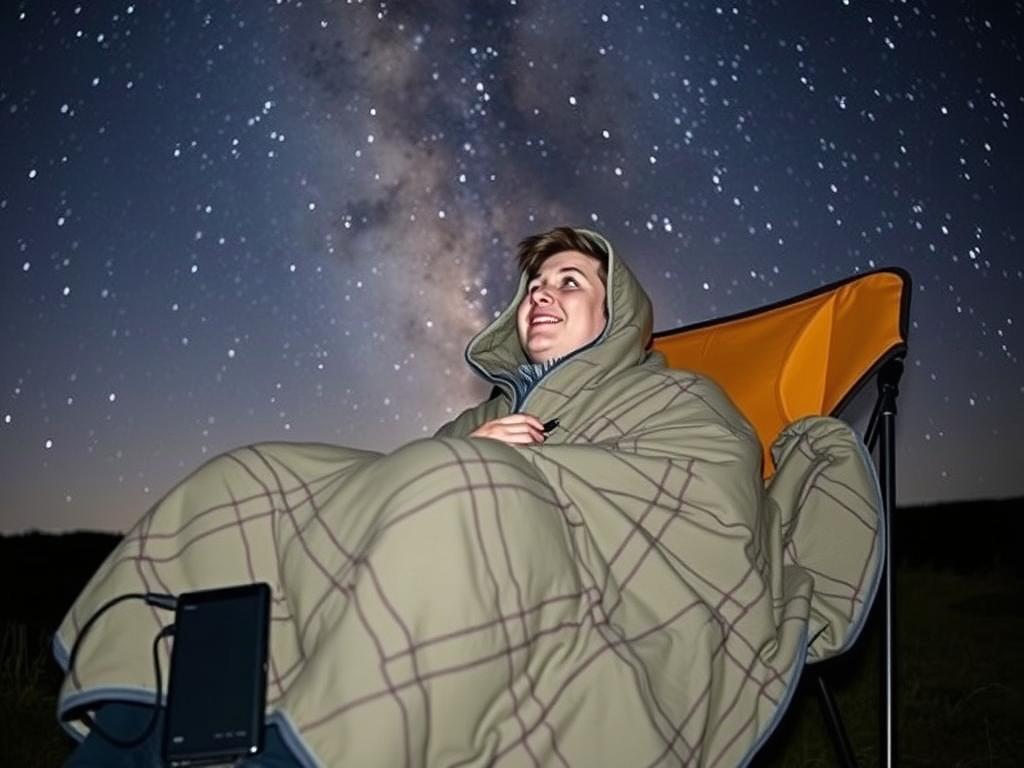
Heated Blankets
Many prime stargazing locations get cold at night, even in summer. A portable heated blanket can extend your viewing time and comfort, especially at high-elevation sites where temperatures drop quickly.
Pro Tip: Even if you don’t have specialized equipment, don’t let that stop you from enjoying the night sky! Many of these locations offer such spectacular views that they’re breathtaking even to the naked eye. Some parks also offer telescope rentals or guided stargazing programs.
Top Dark Sky Destinations in the USA
The following locations represent the best places for stargazing across the United States. Many have received official International Dark Sky designations, recognizing their exceptional stargazing conditions and commitment to preserving natural darkness.
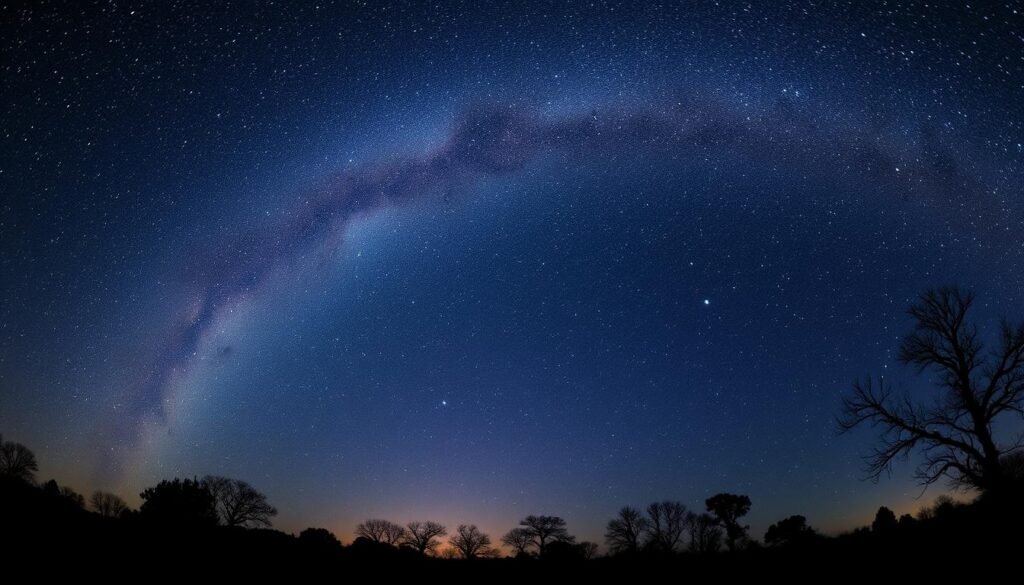
1. Cherry Springs State Park, Pennsylvania
As one of the first International Dark Sky Parks in the eastern United States, Cherry Springs offers some of the darkest skies east of the Mississippi. Located on the Allegheny Plateau at 2,300 feet elevation, this remote park is surrounded by the Susquehannock State Forest, which helps shield it from light pollution.
Unique Features:
- Gold-tier International Dark Sky Park designation
- Dedicated Astronomy Observation Field with 360-degree views
- One of the few places in the eastern US where you can clearly see the Milky Way
- Regular stargazing events and star parties
Best Time to Visit:
Late spring through early fall offers the most comfortable temperatures, though summer brings more humidity. For optimal viewing, plan your visit during a new moon phase and check the Clear Dark Sky forecast before heading out.
Accessibility Tips:
The park’s Astronomy Field requires advance registration for overnight stays. Bring red-filtered flashlights to preserve night vision, and consider a heated blanket for comfort during cool nights, even in summer.
Visitor Information: Overnight astronomy permits cost $25. The park has limited facilities, so come prepared with food, water, and appropriate gear. For more information, visit the official park website.
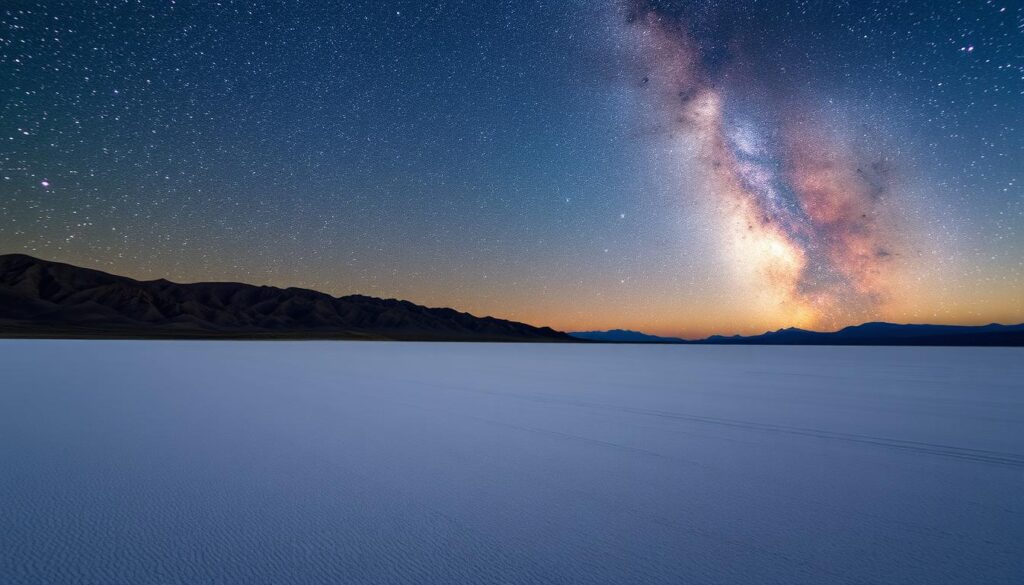
2. Death Valley National Park, California
Despite its ominous name, Death Valley offers one of the most life-affirming stargazing experiences in the country. As the largest International Dark Sky Park in the U.S., its remote location and low humidity create ideal conditions for observing the night sky.
Unique Features:
- Gold-tier International Dark Sky Park status
- Extremely low humidity and high air clarity
- Vast open spaces with unobstructed horizon views
- Milky Way so bright it can cast shadows on moonless nights
Best Time to Visit:
October through April offers the most comfortable temperatures. Summer nights remain extremely hot, often above 90°F. Winter provides longer nights but can be surprisingly cold.
Accessibility Tips:
Popular stargazing spots include Badwater Basin, Mesquite Flat Sand Dunes, and Harmony Borax Works. The park offers camping options, but reservations are recommended during peak season.
Visitor Information: Park entrance fee is $30 per vehicle for seven days. For the best experience, bring plenty of water, sun protection for daytime, and warm layers for night viewing. Check the official park website for current conditions.
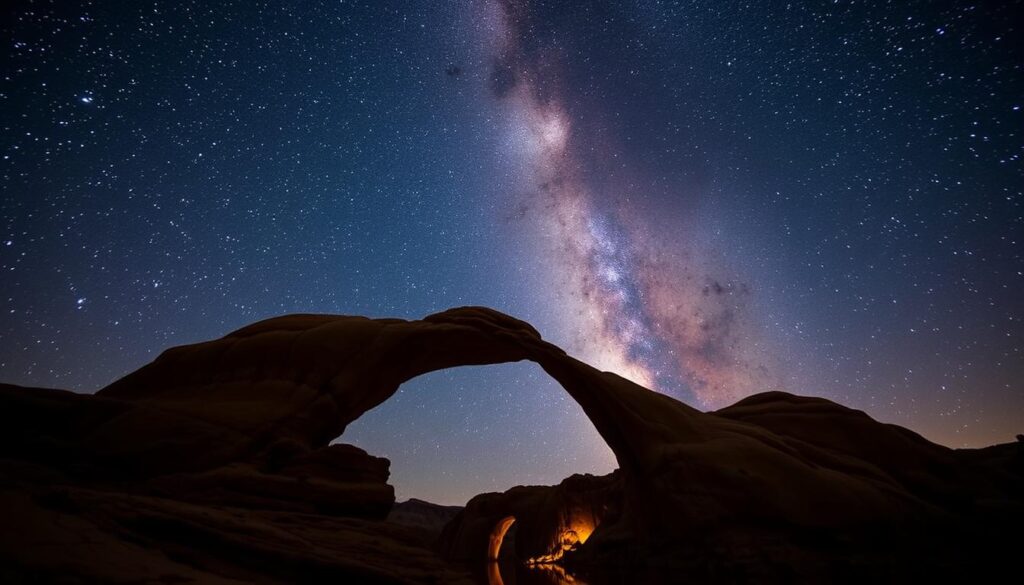
3. Natural Bridges National Monument, Utah
As the world’s first International Dark Sky Park (designated in 2007), Natural Bridges offers a truly special stargazing experience. The combination of high elevation, remote location, and clear desert air creates perfect conditions for observing the cosmos.
Unique Features:
- World’s first designated International Dark Sky Park
- Spectacular natural stone bridges as foreground for astrophotography
- 6,500 feet elevation providing exceptional atmospheric clarity
- Extremely remote location far from urban light pollution
Best Time to Visit:
Spring (April-May) and fall (September-October) offer the best combination of comfortable temperatures and clear skies. Summer brings monsoon clouds, while winter nights are very cold but exceptionally clear.
Accessibility Tips:
The monument has a small 13-site campground available on a first-come, first-served basis. For photography, Owachomo Bridge is the most accessible of the three bridges for night shots.
Visitor Information: Entrance fee is $20 per vehicle. The nearest services are 40 miles away in Blanding, so come prepared with food, water, and fuel. Visit the official monument website for more details.
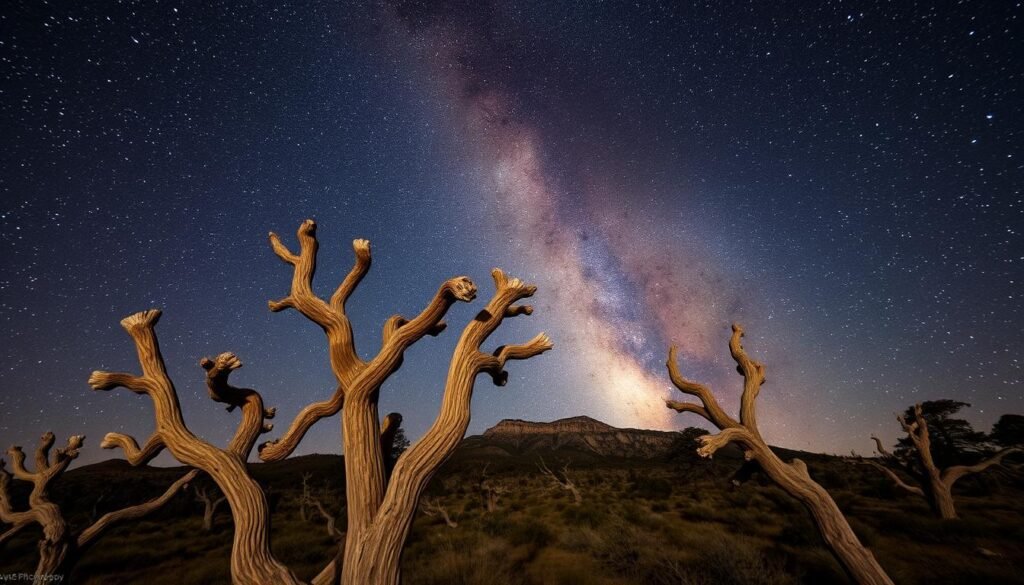
4. Great Basin National Park, Nevada
One of America’s least-visited national parks, Great Basin offers some of the country’s darkest skies. The park’s remote location in eastern Nevada, high elevation, and dry climate create ideal stargazing conditions year-round.
Unique Features:
- Gold-tier International Dark Sky Park
- Ancient bristlecone pine groves (some trees over 4,000 years old)
- High elevation (up to 13,063 feet at Wheeler Peak)
- Annual Astronomy Festival in September
Best Time to Visit:
Summer (June-August) offers the most comfortable overnight temperatures at higher elevations. Spring and fall provide good viewing but cooler nights. Winter brings the clearest skies but very cold conditions.
Accessibility Tips:
The park has several campgrounds at different elevations. Upper Lehman Creek Campground (7,800 feet) offers good sky views while being relatively accessible. Ranger-led astronomy programs run from May through September.
Visitor Information: There is no entrance fee for the park. Campgrounds cost $20 per night and are available on a first-come, first-served basis. Check the official park website for seasonal road closures.
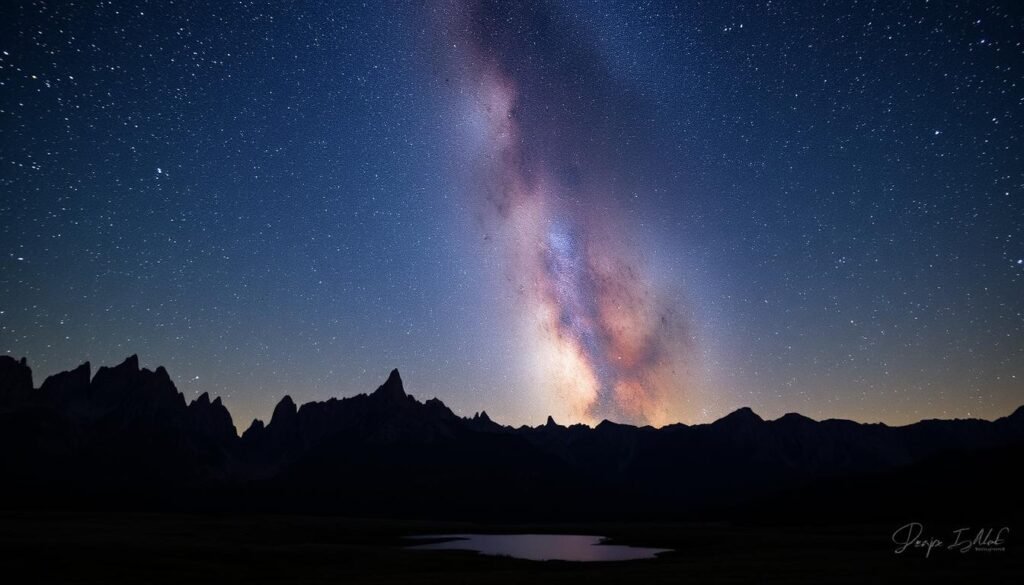
5. Central Idaho Dark Sky Reserve
Covering nearly 1,500 square miles in the Sawtooth Mountains, this was the first International Dark Sky Reserve in the United States. The area encompasses some of the most remote and pristine wilderness in the lower 48 states.
Unique Features:
- Gold-tier International Dark Sky Reserve (highest designation)
- Spectacular mountain scenery with the Sawtooth, White Cloud, and Pioneer ranges
- Numerous alpine lakes that reflect starlight
- Minimal development and vast wilderness areas
Best Time to Visit:
Summer (July-August) offers the most accessible conditions, though nights can still be cold at high elevations. Fall brings clearer skies but colder temperatures. Winter access is limited due to snow.
Accessibility Tips:
Stanley, Idaho serves as the gateway to the reserve. Numerous campgrounds are available throughout the Sawtooth National Recreation Area. For the darkest skies, venture to Redfish Lake or Stanley Lake.
Visitor Information: No fees to access the reserve itself, though some recreation sites charge day-use fees. For planning assistance, contact the Sawtooth National Recreation Area.
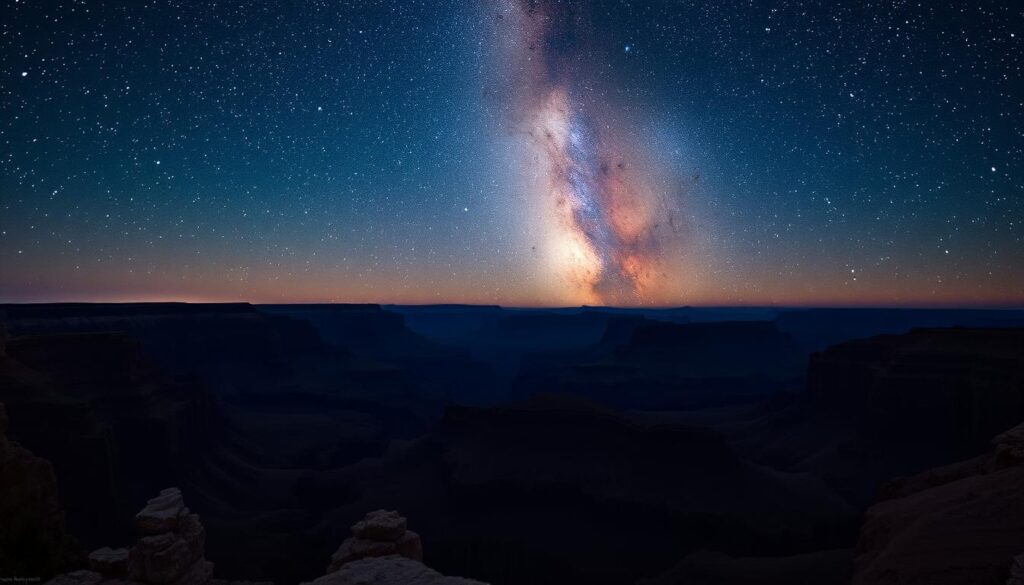
6. Grand Canyon National Park, Arizona
The Grand Canyon’s remote location and efforts to reduce light pollution have earned it International Dark Sky Park status. Stargazing from the rim of this massive chasm creates an unforgettable perspective on our place in the universe.
Unique Features:
- International Dark Sky Park designation
- Dramatic canyon views combined with pristine night skies
- Annual Grand Canyon Star Party in June
- High elevation providing excellent atmospheric clarity
Best Time to Visit:
Spring (April-May) and fall (September-October) offer pleasant temperatures and clear skies. Summer brings monsoon clouds but also the annual Star Party. Winter provides the darkest skies but cold conditions.
Accessibility Tips:
The South Rim is open year-round and offers several viewpoints ideal for stargazing, including Yavapai Point and Lipan Point. The North Rim (open May-October) typically has darker skies but fewer services.
Visitor Information: Park entrance fee is $35 per vehicle for seven days. Campgrounds and lodges fill quickly, so make reservations well in advance. Visit the official park website for planning resources.
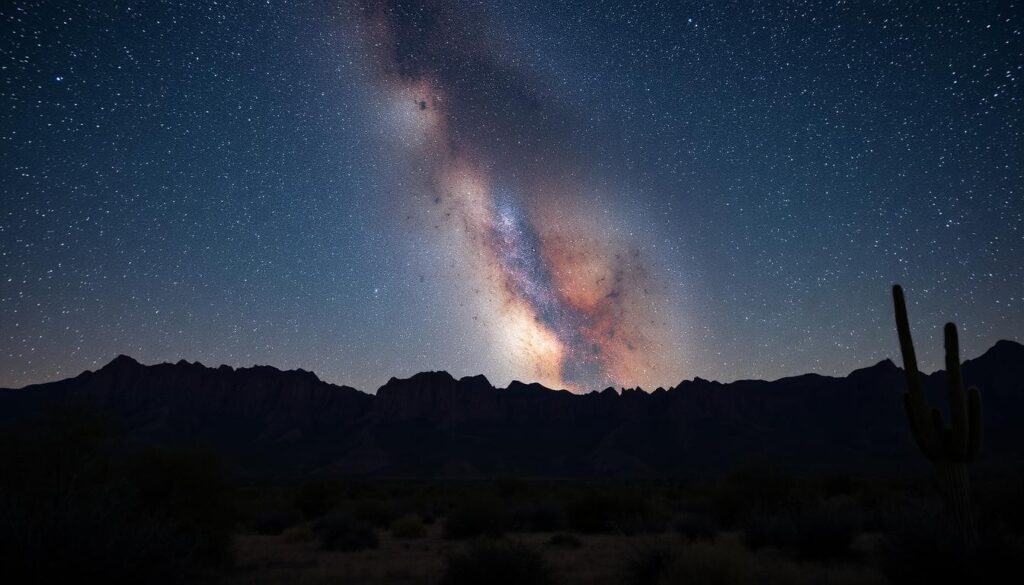
7. Big Bend National Park, Texas
Located along the Rio Grande in west Texas, Big Bend boasts the darkest measured night skies in the lower 48 states. Its remote location, far from major cities, and diverse landscapes make it a premier destination for stargazers.
Unique Features:
- Gold-tier International Dark Sky Park with the darkest skies in the contiguous US
- Diverse landscapes from desert to mountains
- Clear, dry air providing exceptional visibility
- Regular astronomy programs led by park rangers
Best Time to Visit:
October through April offers the most pleasant temperatures. Summer brings extreme heat during the day, though nights cool down considerably. Winter provides longer nights with excellent clarity.
Accessibility Tips:
The park has three developed campgrounds and backcountry camping options. For casual stargazing, the Rio Grande Village and Chisos Basin areas offer good viewing spots with nearby facilities.
Visitor Information: Park entrance fee is $30 per vehicle for seven days. The park is extremely remote, so come prepared with ample supplies. Check the official park website for current conditions.
Essential Tips for a Successful Stargazing Experience
Whether you’re visiting one of America’s premier dark sky destinations or simply heading to a local park, these tips will help you make the most of your stargazing adventure.
Planning Your Trip
- Check the moon phase – Schedule your trip during a new moon for the darkest skies
- Monitor weather forecasts – Clear, dry conditions are ideal for stargazing
- Allow time for dark adaptation – Your eyes need 20-30 minutes to fully adjust to darkness
- Bring appropriate clothing – Even summer nights can be cold at high elevations
- Pack essentials – Water, snacks, and a heated blanket for comfort
Viewing Tips
- Use red light only – A headlamp with red light mode preserves night vision
- Bring binoculars – Even basic astronomy binoculars reveal amazing details
- Download a sky app – Star identification apps help navigate the night sky
- Be patient – Allow time for your eyes to detect fainter objects
- Practice etiquette – Avoid shining lights and respect other stargazers
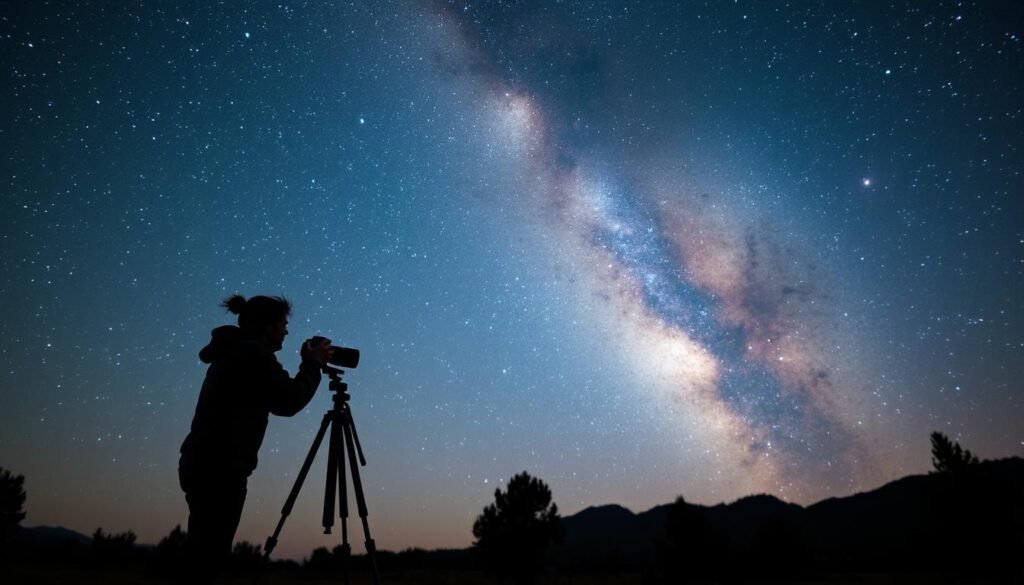
Capturing the Night Sky: Photography Tips
Photographing the night sky requires specific techniques and equipment, but the results can be spectacular. Here are some basic tips to get you started:
- Use a sturdy tripod – Essential for the long exposures needed for night photography
- Bring a fast lens – A wide-angle lens with f/2.8 aperture or faster works best
- Set manual focus to infinity – Autofocus typically doesn’t work well in dark conditions
- Start with these settings – ISO 3200, f/2.8, 20-second exposure
- Try the 500 rule – To avoid star trails, divide 500 by your lens focal length to get maximum exposure time in seconds
- Bring extra batteries – Cold temperatures drain camera batteries quickly
Pro Tip: For stunning Milky Way photos, plan your visit during the new moon between May and September when the galactic core is most visible in the Northern Hemisphere.
Upcoming Celestial Events Worth Planning For
Beyond the everyday wonders of the night sky, certain astronomical events offer rare and spectacular viewing opportunities. Here are some upcoming events worth marking on your calendar:
| Event | Date | Best Viewing Locations | Viewing Tips |
| Perseids Meteor Shower | August 11-13, 2023 | Cherry Springs State Park, Central Idaho Dark Sky Reserve | Look northeast after midnight; up to 100 meteors per hour |
| Geminids Meteor Shower | December 13-14, 2023 | Death Valley, Big Bend National Park | The year’s best shower; up to 150 meteors per hour |
| Total Lunar Eclipse | March 14, 2025 | Visible across all USA | No special equipment needed; best viewed from dark locations |
| Annular Solar Eclipse | February 17, 2026 | Path through western states | Requires proper solar filters; never look directly at the sun |
Safety Note: Never look directly at the sun, even during an eclipse, without proper eye protection specifically designed for solar viewing. Regular sunglasses do not provide adequate protection.
Frequently Asked Questions About Stargazing
Can I stargaze without a telescope?
Absolutely! Many celestial objects, including the Milky Way, planets, meteor showers, and thousands of stars, are visible to the naked eye from dark sky locations. While a telescope or binoculars will reveal more detail, they’re not essential for an enjoyable stargazing experience.
What’s the difference between a Dark Sky Park and a Dark Sky Reserve?
Both designations recognize exceptional starry skies and nocturnal environments. A Dark Sky Park is typically a public land that implements a rigorous dark sky preservation plan. A Dark Sky Reserve is larger and includes a core zone meeting dark sky criteria surrounded by a peripheral area that supports dark sky preservation but may include some communities.
When is the best time of year for stargazing?
Each season offers different celestial highlights. Summer reveals the core of the Milky Way in the Northern Hemisphere. Winter nights tend to be clearer with less humidity. Spring and fall offer comfortable temperatures and good viewing conditions. The best time is during a new moon phase when the sky is darkest.
What should I bring for a stargazing trip?
Essential items include: warm clothing (layers even in summer), a red light headlamp, a comfortable chair or blanket to sit on, a heated blanket for cold nights, binoculars or a telescope if you have them, a star chart or astronomy app, snacks and water, and insect repellent in warmer months.
How do I find the Milky Way?
In the Northern Hemisphere, the brightest part of the Milky Way (the galactic center) is best visible from late May through early September. Look toward the southern horizon after dark. It appears as a hazy, cloud-like band stretching across the sky. The darker your location, the more distinct it will appear.
Embrace the Wonder of America’s Dark Skies
From the ancient bristlecone pines of Great Basin to the towering canyons of the Southwest, America’s dark sky destinations offer more than just stellar views—they provide a profound connection to the cosmos that has inspired humanity for millennia. In our increasingly illuminated world, these precious dark places remind us of our place in the universe and the importance of preserving the night for future generations.
Whether you’re an experienced astronomer with advanced equipment or simply curious about what lies beyond our atmosphere, the destinations in this guide offer unforgettable experiences beneath some of the darkest skies in the country. Pack your binoculars, bring a warm blanket, and prepare to be amazed by the celestial wonders waiting above.
Ready for Your Stargazing Adventure?
Equip yourself with the right gear to make the most of America’s dark skies.

